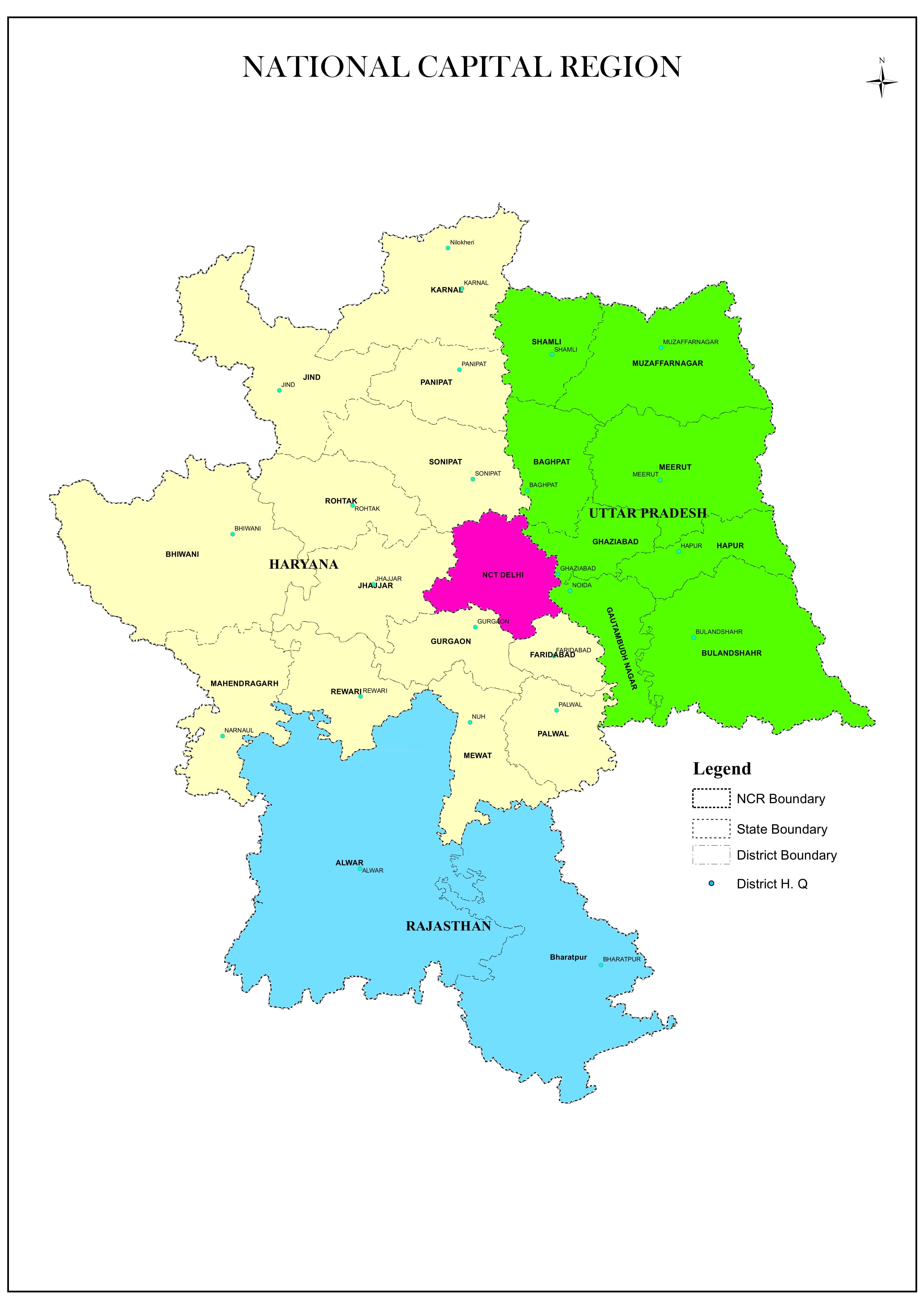Some Thoughts on Delhi's Administrative Chaos
 |
| Map of Delhi-NCR (source: NCR Planning Board) |
Post independence, Delhi was a Category C state at the time of Independence, with Chaudhary Brahm Prakash being its first Chief Minister. A Nairobi returnee, the man had despite being a Congressman faced significant problems with Anand D Pandit, the then Chief Commissioner of the state, equivalent of the Lieutenant Governor or Governor for a state. Eventually forced to resign from the post in the face of a jaggery scam, the States Reorganisation Commission eventually led to Delhi being downgraded to a Union Territory amid near universal criticism. Of course, the impact of Brahm Prakash remained on the planning principles, particularly the urban sprawl model, that has lasted in every master plan of Delhi since.
Of course, the demands for statehood remained alive, with the Bharatiya Jana Sangh leading the campaign for the longest time. However, the thinking of course was that the city should have lesser layers and have a uniform governance model akin to Washington DC or Canberra. This was also driven in part by the need for having a security force to address concerns of safety of elected members of parliament among other functions. However, the Jana Sangh persisted with the demand and even won Metropolitan Council repeatedly. Vijay Kumar Malhotra, senior BJP leader and multiple time Member of Parliament from Delhi, in fact had become the Chief Executive Councillor of Delhi in 1967, and the Jana Sangh was considered a formidable political force in Delhi's politics.
The challenges of course remained. As the Balakrishnan Committee report of 1989 had noted, there were several functional and structural deficiencies in the way Delhi was being administered. Chief among them was the fact that the Metropolitan Council and the Chief Executive Councillor were essentially titular positions with little power to legislate or to even deliberate on laws. This was on top of the Delhi Municipal Corporation that existed alongside the Council. The various departments at the time moved in their own directions in the absence of any nodal agency, and multiplicity of agencies was seen as a problem even then. Some of the problems continue to this day in fact. For instance, the confusion caused by multiplicity of revenue laws continues to plague Delhi, as some parts were taken in from Punjab of that time.
Yet, the reason why full statehood got rejected at the time held up even in 2018. Among other reasons, two stood out. One was on the fact that Delhi’s finances would be in a Constitutionally untenable position where it gets disproportionate Central benefits. The other was philosophical - Delhi being the capital of the nation needed Central interventions on a daily basis and thus made no sense. Thus, a middle path of sorts was sought. However, the role of the LG and Chief Minister, where the LG would be given the power to override the advice of the elected government on matters that did not fall under the purview of the elected government and where his discretionary powers may apply. It is these terms that have led to much chaos.


Comments